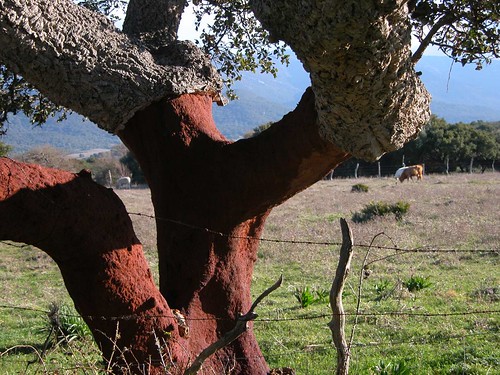
In an article titled “Mediterranean cork oak savannas require human use to sustain biodiversity and ecosystem services,” it is suggested that cork oak savannas are neglected, deserted, or overused, depending on where the savanna is located on the Mediterranean Basin. The conservation of cork oak savannas has been monitored closely due to their protection through the Convention on Biological Diversity. The term biodiversity “hotspot” was defined in lecture as Earth’s most biologically rich and most endangered terrestrial ecoregions. The reason much of the Mediterranean Basin can be defined as such, is due to the presence of people. This is particularly true of the oak cork savanna in northwestern Africa, which is being degraded due to poverty-driven overuse. The lack of regulatory policies present in such impoverished regions helps perpetuate this problem. Although the savannas are technically owned by the state, local people are sanctioned to use the woodland resources. However, overharvesting of both fuel wood and acorns and overgrazing threaten the fine balance of the savanna ecosystem by degrading the tree cover, decreasing the regeneration of the oak cork trees, and risking the sustainability of the environment. These effects are magnified for communities that suffer from poverty due to their lack of education in the proper ways of cork harvesting. Therefore, often times the cork is inappropriately stripped; too frequently gathered, not giving the tree enough recuperation time since a live tree should be harvested once every 9-12 years; or accidently harmed by unskilled harvesters.
Although both poverty and conservation of biological diversity are two very broad topics that seem as though they should be addressed separately, they are linked in such a way that sometimes makes it easier to tackle them at the same time. One of the reasons that the European Union doesn’t face similar problems as does northwestern Africa is because they put into effect the Common Agricultural Policy (CAP), whose goal is to protect biodiversity. The CAP attempted to do this by establishing the Agri-environmental schemes (AES) which helped to decrease the negative effects of agriculture and promote environmentally friendly farming techniques by providing monetary compensation for the farmers. However, AES weren’t very successful since there wasn’t a very strong thread holding AES and other CAP projects together. Other initiatives such as “Reducing Emissions from Deforestation and Forest Degradation and enhancement of carbon stocks,” also known as REDD+, proved to be a far more successful scheme. REDD+ was established specifically for places such as the northwestern cork oak savannas of Africa, where the land was downtrodden by overuse. It was designed to act as a proponent of large-scale ecological restoration activities. Furthermore, its role in the reduction of overharvesting of fuel wood would also in turn benefit biodiversity conservation efforts. By providing technological support and/or compensation for pursuing alternative energy/livelihood approaches to such rural areas as Africa, REDD+ can help promote more positive social impacts and help both impoverished communities and biological diversity.
By: Niree Dingizian
Works Cited:
Bugalho, Miguel N., et al. “Mediterranean cork oak savannas require human use to sustain biodiversity and ecosystem services.” The Ecological Society of America (2011): 10.1890/100084. Web. 13 Nov. 2011.
http://www.uv.es/jgpausas/papers/Bugalho-2011-FEE-corkoak-conservation.pdf
No comments:
Post a Comment